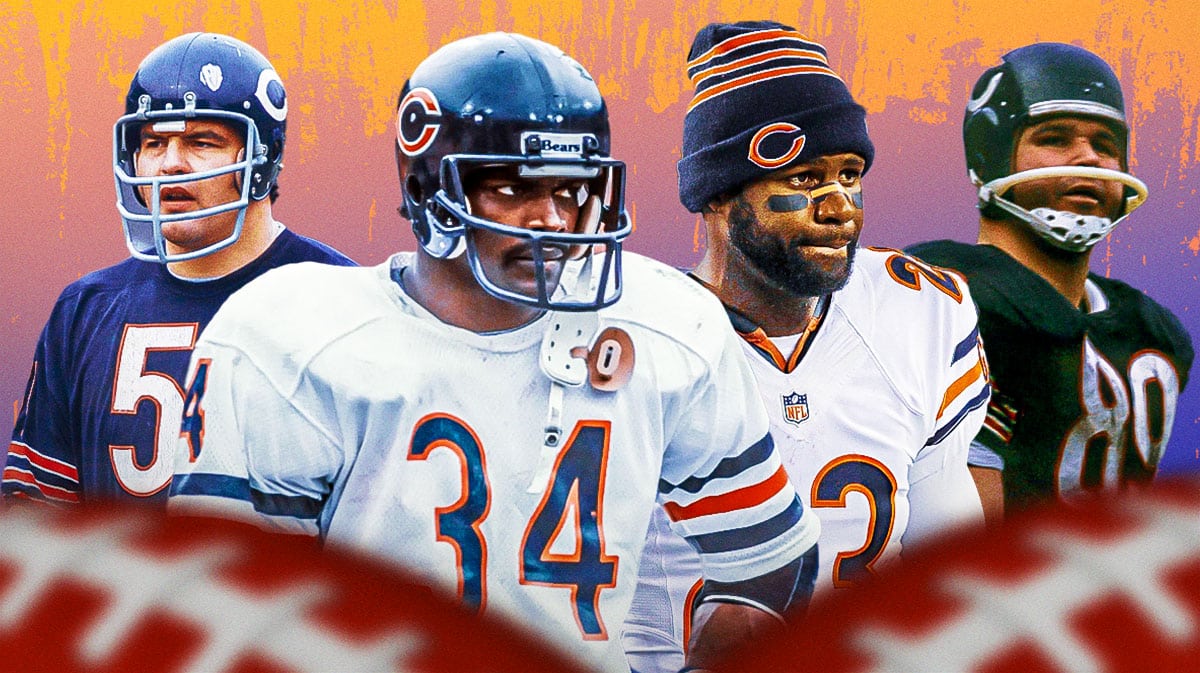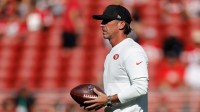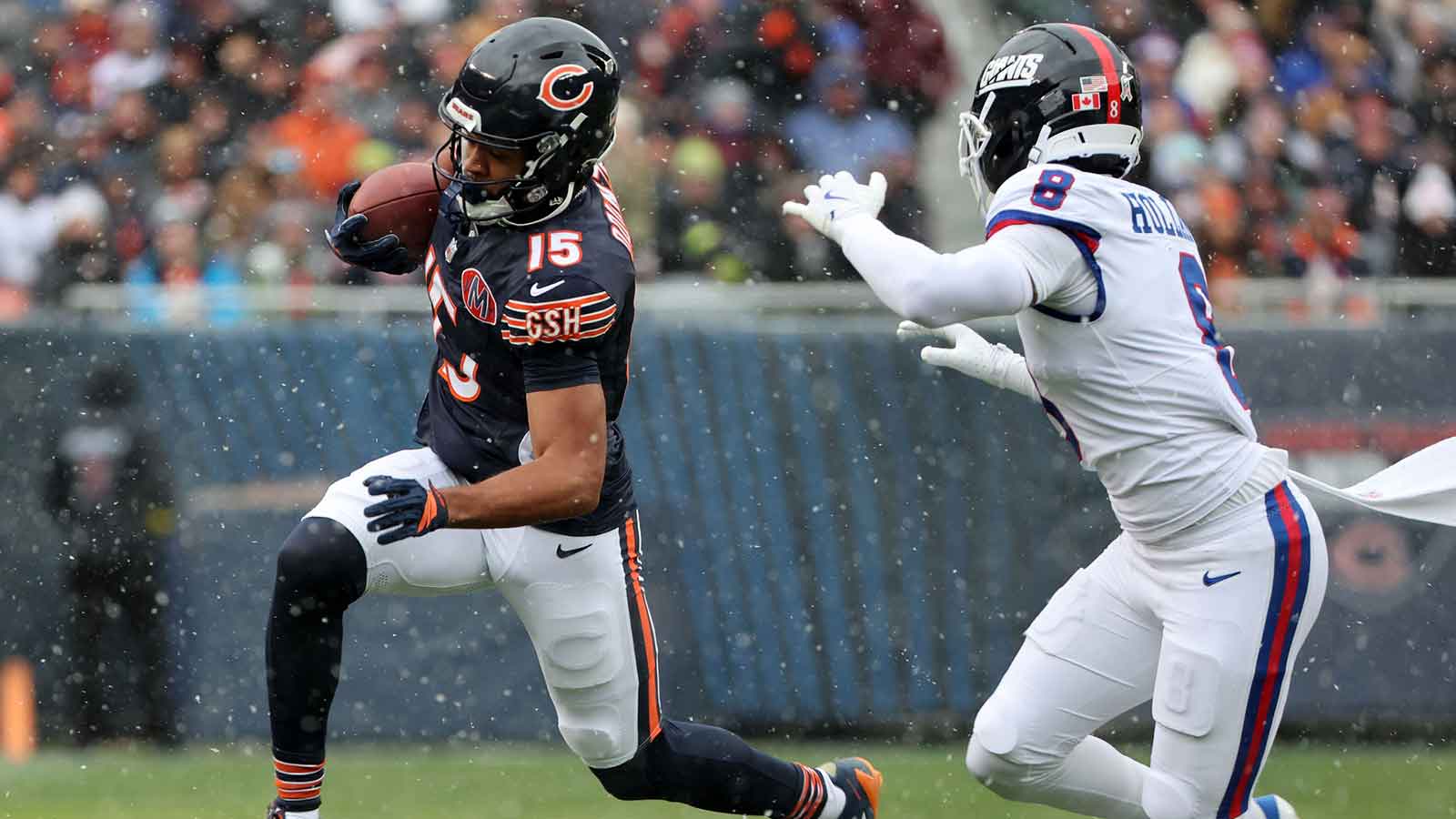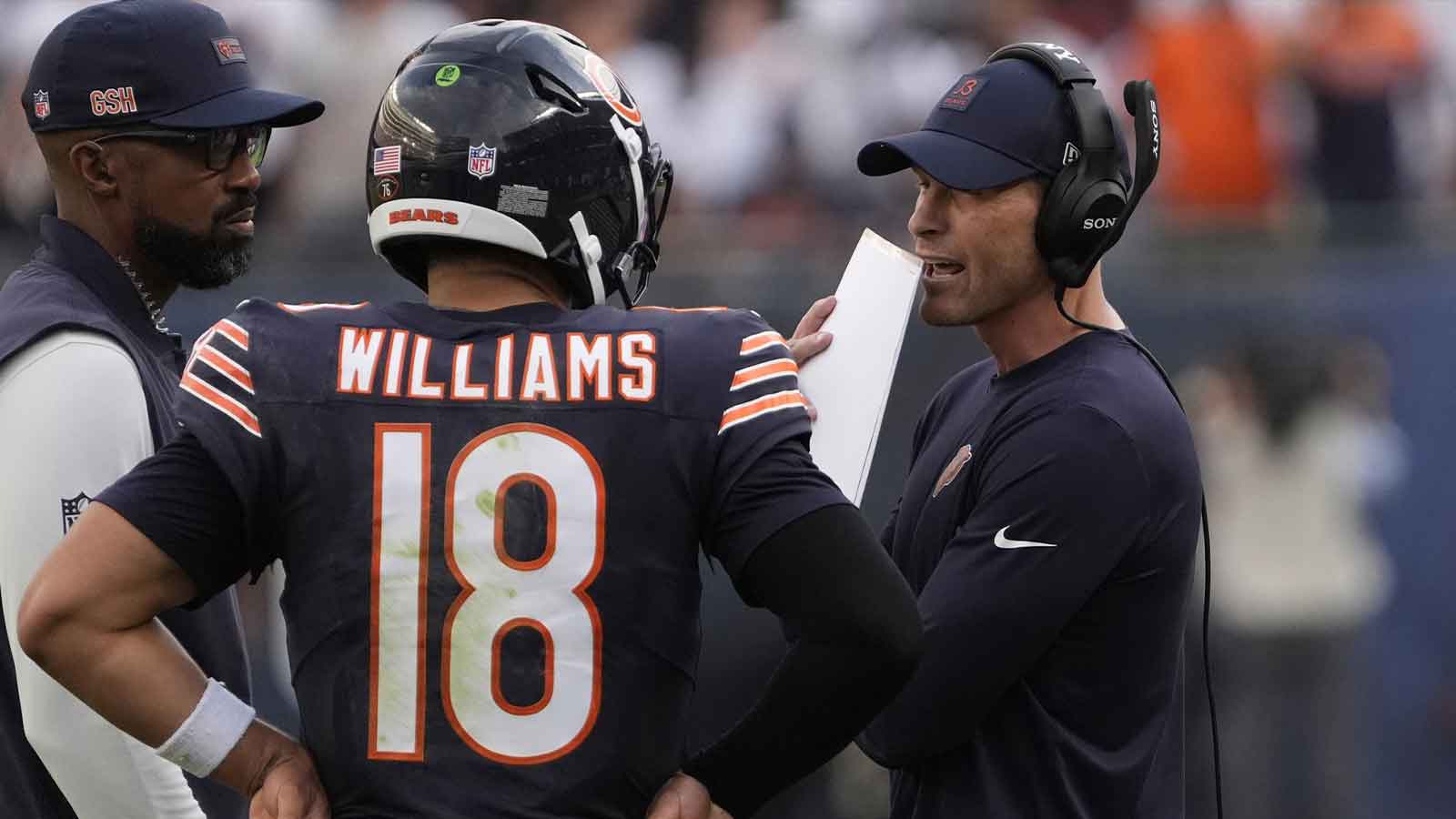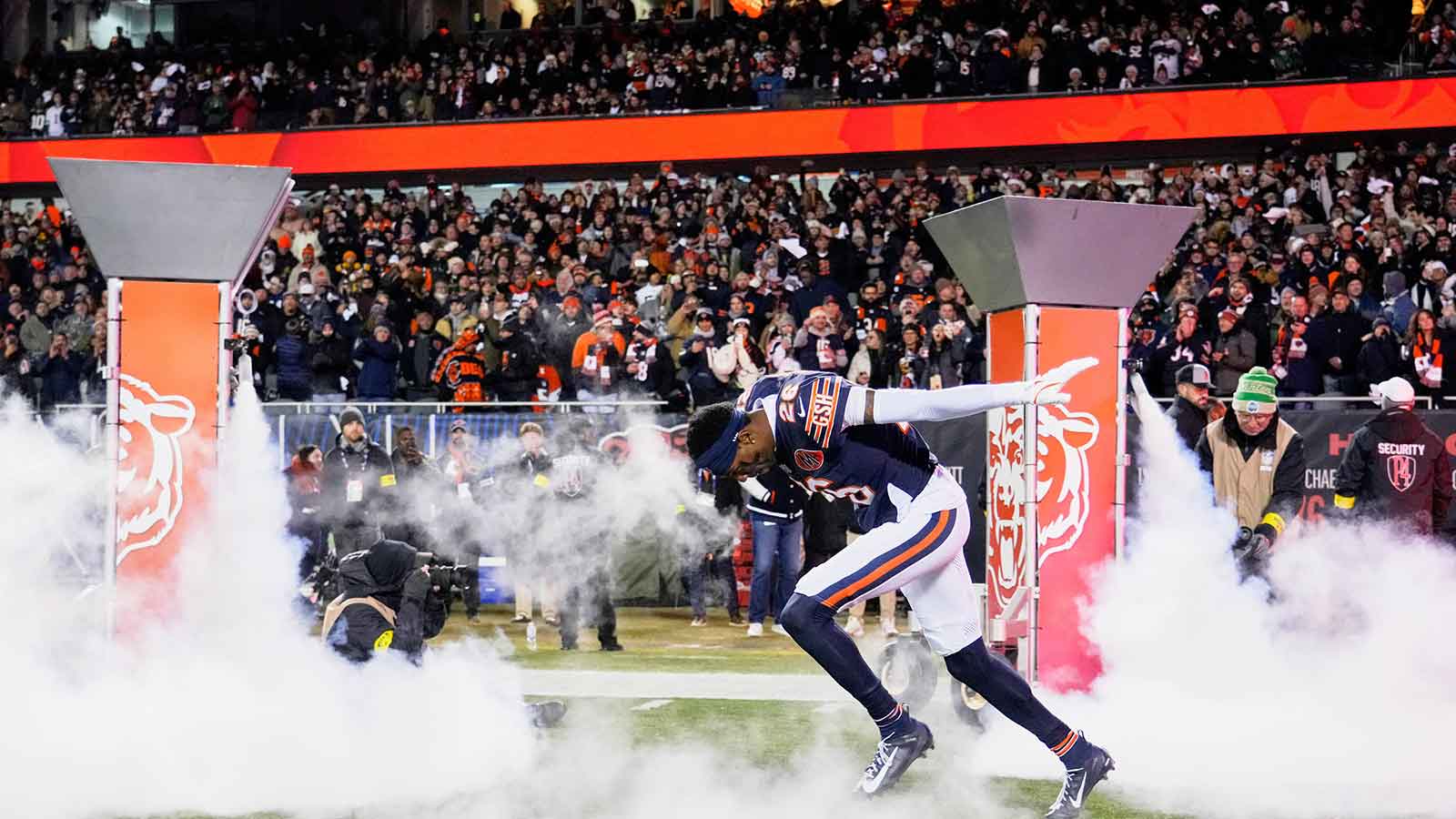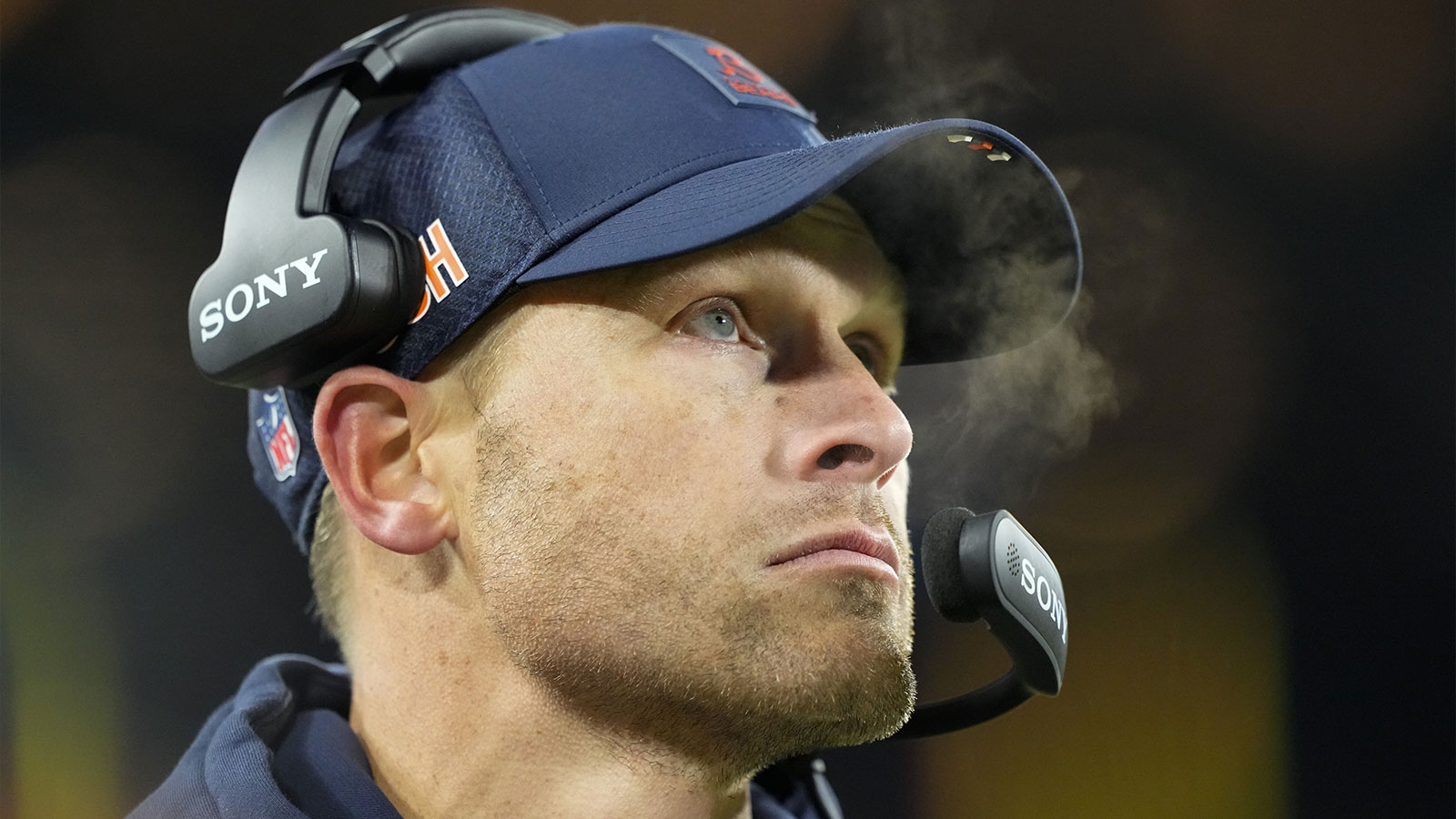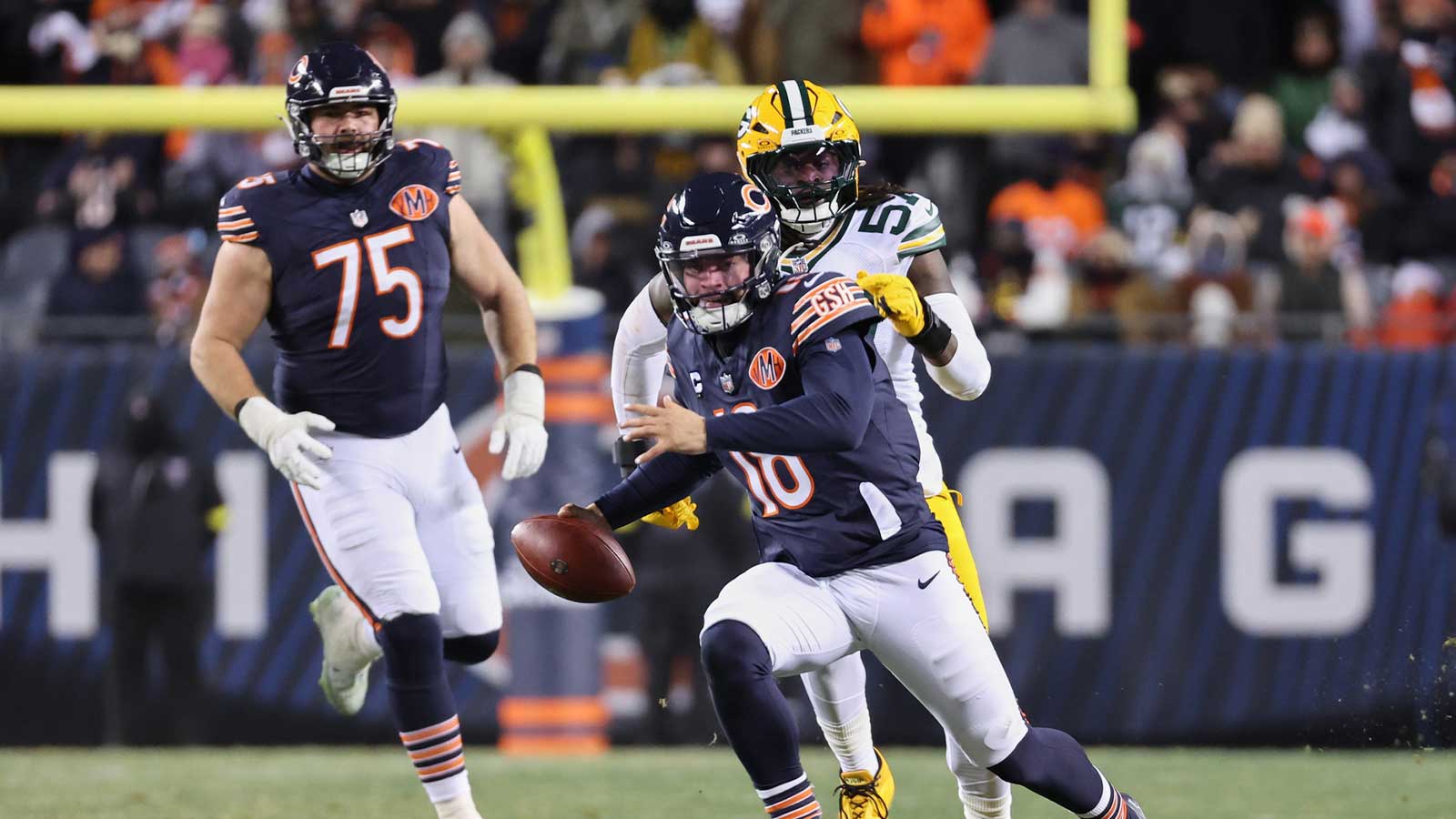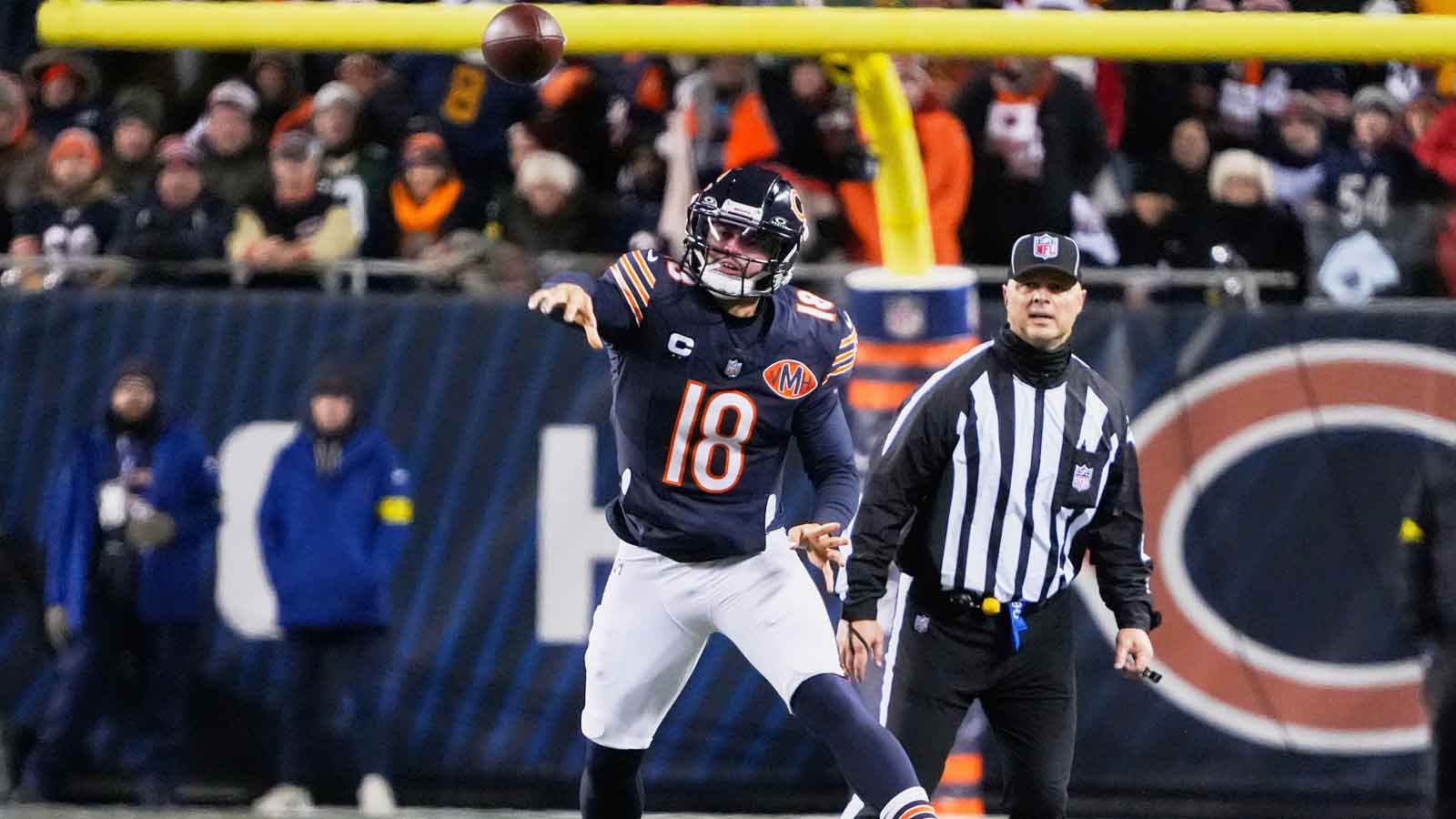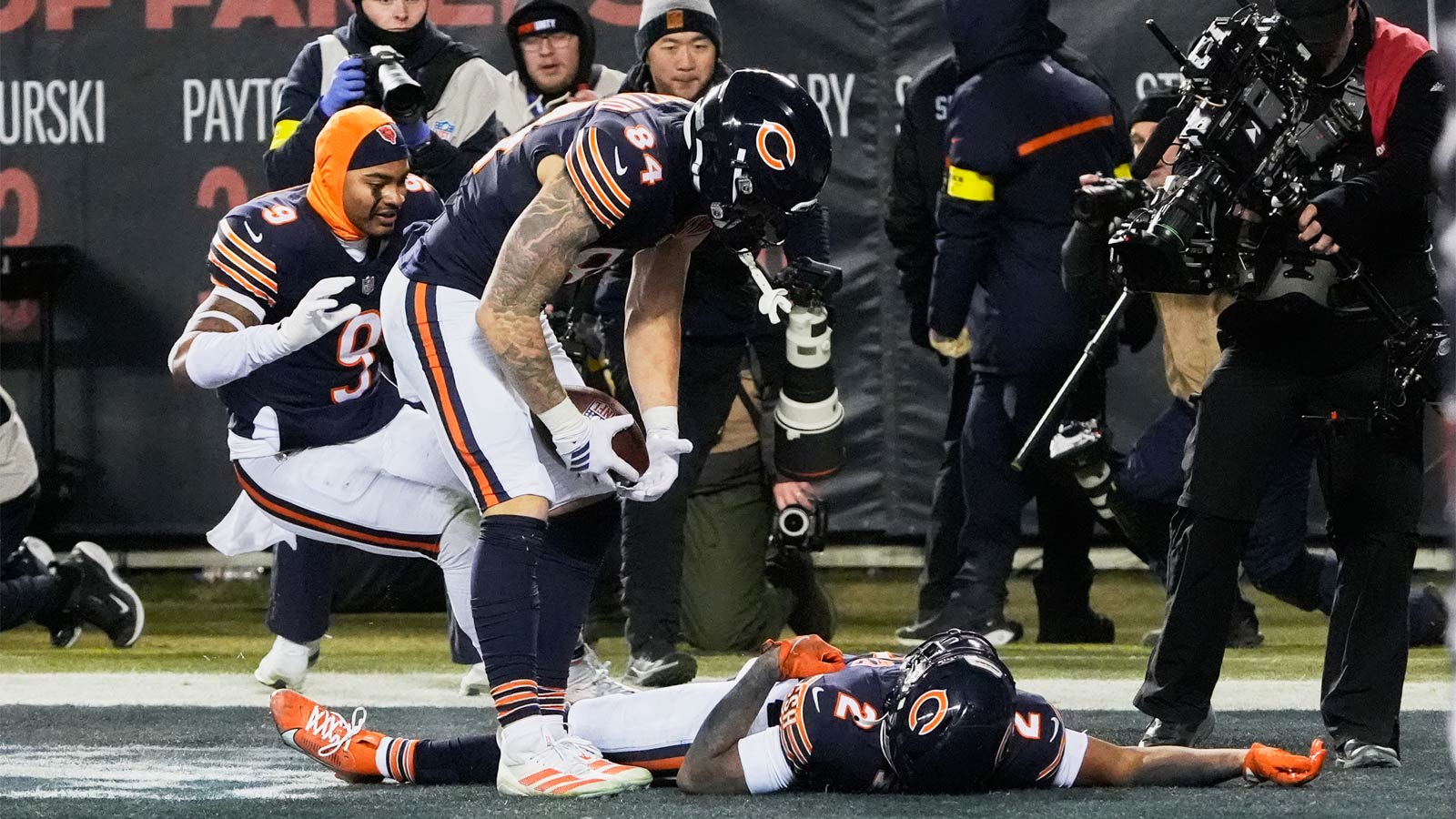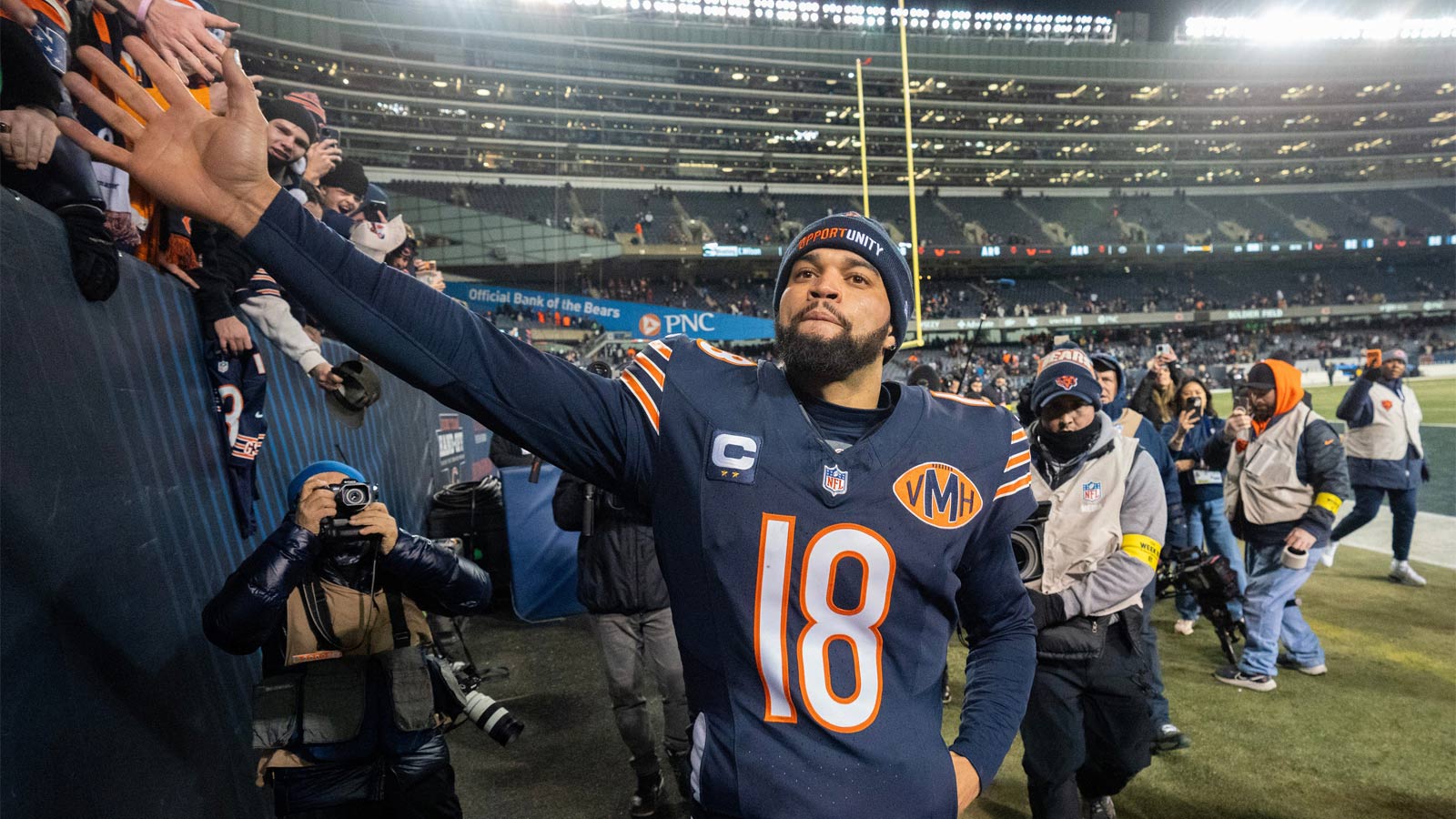It's not a stretch to say that in the 100-plus year history of the National Football League, no team has a richer history than that of the Chicago Bears.
Now sure, the Bears' lone Super Bowl win doesn't stack up to the totals of franchises like the New England Patriots and Pittsburgh Steelers (six each), the San Francisco 49ers and Dallas Cowboys (five), or even the hated Green Bay Packers (four). But nine total NFL titles are the second-most in league history, and no franchise has more Hall of Fame players than the Bears do.
Today, my task is simple: which of these 40 Chicago Bears Hall of Famers make up the list of the Top 10 players in franchise history?
Honorable Mentions
Before we get to the Top 10, I'd like to just take a moment to note a handful of players who should be considered the Honorable Mentions in this exercise. That includes Hall of Famers such as Red Grange, Dan Hampton, Bill George, Clyde “Bulldog” Turner, Jimbo Covert, George McAfee, Bill Hewitt, and Mike Singletary.
I'd also like to give a tip of the hat to seven of the best Bears players of the 21st century… guys who aren't Hall of Famers, but have been among my favorite players throughout my three decades of Chicago Bears fandom: Charles “Peanut” Tillman, Lance Briggs, Olin Kruetz, Matt Forte, Mike Brown, Khalil Mack, and Robbie Gould.
Now, how about we Bear Down and dive into the Top 10!
10. Devin Hester
Chicago Bears career: 8 years, 3-time Pro Bowler, 3-time All-Pro
Along with Steve McMichael and four-year Chicago Bears defensive end Julius Peppers, Devin Hester is one of three former Bears players who was officially enshrined into the Pro Football Hall of Fame in August, and that raises one very important question: how the hell did Devin Hester miss out on enshrinement during his first two years of Hall of Fame eligibility?
There should be a general rule of them that comes with Hall of Fame qualification that states, If you're the best player in the history of the NFL at the position you played, you're in, and that means Hester should've been in on his first attempt because there is no better, more dynamic, or more feared return man in the history of pro football than Devin Hester.
9 minutes of Devin Hester highlights?
Sold.
🎥: @ChicagoBears pic.twitter.com/qjVsPfO3yg https://t.co/AU4uP62D2X
— The 33rd Team (@The33rdTeamFB) February 10, 2024
I refuse to believe that it's a coincidence that the one Bears Super Bowl appearance in my lifetime overlapped with Devin Hester's first year in the NFL — a season in which Hester scored six return touchdowns, including a punt return in his first NFL game, a 108-yard return following a missed field goal, and a game-winning punt return against the Arizona Cardinals on Monday Night Football.
Of course, Hester's most famous return touchdown came on the first play of the biggest game of his career: Super Bowl XLI.
17 years ago today, Devin Hester returned the opening kickoff of Super Bowl XLI.pic.twitter.com/WOTwQFpdHG
— Dave (@dave_bfr) February 4, 2024
Even if Devin Hester didn't touch the ball, his presence alone made him one of the most impactful players in the NFL during his peak. Consider, that according to Jonathan Wood of Da Bears Blog, Chicago ranked in the top three in the NFL in average drive starting position in Hester's first five years in the NFL.
This has just as much to do with the possessions that started without a Hester return as it did possessions that began with a Hester return. Average Net Yards Per Punt versus Bears during Hester's eight seasons in Chicago was 36.8 yards – 3 yards less than the league average during that time, a credit to punters doing everything they could to keep the ball out of Hester's hands.
Devin Hester changed the game of football forever, and it's about damn time the Pro Football Hall of Fame recognized that.
9. Doug Atkins
Chicago Bears career: 12 years, 8-time Pro Bowler, 6-time All-Pro
After playing the first two years of his pro football career with the Cleveland Browns, Hall of Fame defensive end Doug Atkins spent the next dozen seasons of his career playing in Chicago.
During his 12 seasons in the Windy City, Atkins helped the Bears live up to the Monsters of the Midway moniker that caught on in the media during Chicago's 1943 NFL Title campaign, serving as a key piece of the team that would win the NFL Title 20 years later in 1963.
Atkins, who was 6'8″ and a former SEC high jump champion, was a terrifying presence along the Bears front who was known for jumping over offensive lineman on his way into the backfield and for using his height to bat down passes.
Despite a longstanding reputation for being rebellious off the field, along with numerous instances where he butted heads with Chicago Bears head coach/owner George Halas, at the time the Hall of Famer retired in 1969, Halas stated that “there was never a better defensive end” than Doug Atkins.
8. Richard Dent
Chicago Bears career: 12 years, 4-time Pro Bowler, 4-time All-Pro, Super Bowl XX MVP
In regards to Papa Bear's 1969 claim that Atkins was the best defensive end in Bears history, well, he hadn't yet seen Richard Dent.
He was an eighth-round pick of the Bears in 1983 and was arguably the best player on the best defense in the history of the NFL… the 1985 Bears, a generationally dominant defense led by four Hall of Famers — Dent, Mike Singletary, Dan Hampton and Steve McMichael — that trounced opposing offenses and led the NFL in points allowed (198), yards allowed (4,135) and takeaways (54).
Dent led the NFL in sacks and forced fumbles in 1985, and Chicago's nearly perfect 1985 season ended with Dent being named the Super Bowl XX MVP after a performance in which he notched 1.5 sacks and two forced fumbles.
Richard Dent's 137.5 career sacks rank 10th all time, and his 124.5 sacks while playing in Chicago are most by any player who donned a Bears uniform.
7. Sid Luckman
Chicago Bears career: 12 years, 3-time Pro Bowler, 5-time All-Pro, 1943 NFL MVP
You have to go back over 80 years to find the one occasion when a Chicago Bears quarterback was arguably the best player in the NFL. Long before the proliferation of the passing game, Sid Luckman was considered one of the pioneers of the forward pass.
Given the Bears' decade-spanning ineptitude at finding a star to play this tremendously important position, how's that for cruel irony?
Sid Luckman and the T-Formation were responsible for carrying the Bears to four NFL Titles over the course of a seven-year span from 1940 to 1946, including in 1943, a season in which Luckman's 2,194 passing yards and 28 passing touchdowns were the most in the NFL.
Luckman led the league in both passing yards and touchdowns two more times during his career, and to this day, he's the only Bears quarterback who has accomplished this feat.
In addition to playing quarterback, Sid Luckman also served as the Bears punter for the majority of the 1940s and played both ways for a good chunk of his career, as many players did well into the 1960s. As a defender, Luckman hauled in 17 career interceptions, which are 25th-most in the Bears record books.
6. Bronko Nagurski
Chicago Bears career: 9 years, 4-time All-Pro
Tales of Bronko Nagurski's strength, toughness, and dominance on the gridiron often read like folklore. Like the story of how when Nagurski was still in college, he played a late-season game with a cracked vertebrae, scoring the go-ahead touchdown on offense while also hauling in a fumble recovery and interception on defense in the same game.
Or the story of how once while playing at Wrigley Field, Nagurski ran through the end zone on a touchdown run and collided with a brick wall, only to return to the huddle and say, “That last guy hit me awfully hard.”
But perhaps the best Bronko Nagurski story, or at least the one that should define who he was as a player, relates to his return to the Bears in 1943 after a five-year hiatus in which the Bronk pursued a full-time career in professional wrestling.
He was called back into action by Halas in 1943 when the Bears were struggling to field a team because so many of their players were serving in World War II. Nagurski played defensive tackle for the majority of the season, but when the Bears needed an offensive boost down the stretch, they turned to Nagurski, who played fullback for the final two games of the year as well.
The 1943 NFL Championship Game was the final game of Nagurski's career. He'd go onto return to the squared circle shortly after, continuing his wrestling career for another 17 years.
5. Brian Urlacher
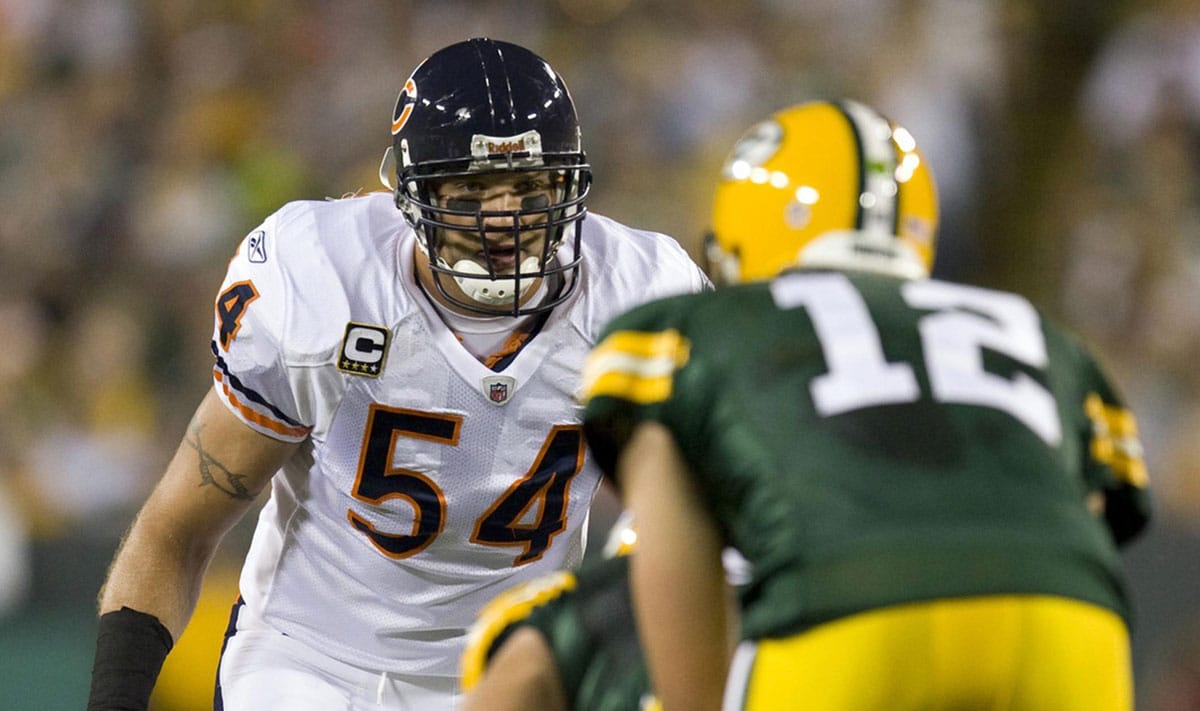
Chicago Bears career: 13 years, 8-time Pro Bowler, 5-time All-Pro, 2000 NFL Defensive Rookie of the Year, 2005 Defensive Player of the Year
The best Chicago Bear of the 21st century comes in at No. 5 on this list, four spots higher than he was drafted in 2000. On numerous occasions over the next 13 seasons, the Bears were able to boast one of the best defenses in the NFL thanks in large part to one of the most complete linebackers in the history of the game patrolling the middle of the field.
Urlacher was named Defensive Rookie of the Year in his first season and made a pair of All-Pro teams in his second and third seasons.
In his sixth season, Urlacher was named the NFL Defensive Player of the Year and rivaled Ray Lewis as the best linebacker in the NFL. For Chicago's Tampa 2 scheme, a better linebacker than Urlacher couldn't have been designed in a laboratory.
Brian Urlacher's 180 starts are third-most in Bears history behind former teammate Olin Kruetz, and the man who occupies the No. 1 spot on this list. His 1,046 tackles and 138 tackles for loss are most in Chicago Bears history.
Though I could certainly be accused of recency bias for slating Urlacher this high, my eyes often told me that there weren't too many peers who could take over a game on the defensive side of the ball as often or effectively as Urlacher could during his prime.
4. Gale Sayers
Chicago Bears career: 7 years, 4-time Pro Bowler, 5-time All-Pro, 1965 NFL Offensive Rookie of the Year, 1969 NFL Comeback Player of the Year
Much like a comet itself, the career of the “Kansas Comet” was just as exciting as it was fleeting. Sayers played in just 68 games over the course of seven NFL seasons, but that was enough for former teammate and eventual Chicago Bears head coach Mike Ditka to proclaim that Sayers was, “the greatest player I've ever seen.”
And had a devastating knee injury right in the middle of Sayers' prime never occurred — or maybe had it occurred during an age in which an ACL and MCL tear was not the equivalent of a death sentence for a running back — it's possible that we would all feel this way.
To this day, Gale Sayers' average of 138.7 scrimmage yards per game is the highest in NFL history. His 56 career touchdowns in 68 games put him on a pace where he would've been among the NFL's all-time touchdown leaders if he had managed to stay healthy for a decade-plus, like all of the other greatest running backs in league history did.
But keep in mind, Sayers wasn't just a member of the NFL's 75th Anniversary Team as a running back. He was also named the team's kickoff returner as well, after taking a combined eight kicks and punts back for touchdowns during his short career.
To novice football fans, Sayers may be most well-known for Billy Dee Williams' portrayal of him in Brian's Song, a 1971 film based on the true story of Sayers' relationship with teammate Brian Piccolo, who died of cancer in 1970 at the age of 26.
Sayers played just four more games over the course of two seasons following his teammate's death thanks in large part to the serious knee injury he suffered in 1968 and subsequent injuries he suffered after the fact.
3. Mike Ditka
Chicago Bears career: 6 years, 5-time Pro Bowler, 5-time All-Pro, 1961 NFL Rookie of the Year
You can't talk about the Chicago Bears without talking about Mike Ditka, and you can't talk about Mike Ditka without taking into account his career as the head coach of the Chicago Bears.
As a player, Ditka certainly has the qualifications for this list. He changed the tight end position in the NFL, turning what had historically been a role devoted to a blocker into one utilized in the passing game.
To this day, Ditka's rookie season — 56 receptions, 1,076 yards, 12 touchdowns — may be the best first year that any tight end has had in the long history of the NFL. Although, the Las Vegas Raiders' Brock Bowers has an argument for surpassing Ditka's rookie season.
But what elevated Ditka to cult hero status in the city of Chicago was his 11-year tenure as the head coach of the Bears.
Mike Ditka had a 106-62 record in 11 seasons leading the Chicago Bears, which included seven seasons in which the Bears won at least 10 games and made the Playoffs. Most notably, Ditka — and defensive coordinator Buddy Ryan — led the Bears to the Super Bowl in 1985, which made Ditka a bonafide legend in the Windy City.
Shortly after, the semi-regular Bill Swerski's Super Fans skit on Saturday Night Live launched the Steel City native into full-blown superstardom. Mike Ditka had become Da Bears.
2. Dick Butkus
Chicago Bears career: 9 years, 8-time Pro Bowler, 8-time All-Pro, 1969 and 1970 NFL Defensive Player of the Year
When you think of the phrase “The Monsters of the Midway,” Dick Butkus is likely the first player who comes to mind. In fact, you can make the case that no single player epitomizes the team he played for more so than Butkus did with the Bears.
Dick Butkus highlights never get old. #Bears pic.twitter.com/HnyZJqlSXw
— ChiCitySports.Com (@ChiCitySports23) August 25, 2021
Appropriately nicknamed “The Animal,” Dick Butkus is the NFL's defining middle linebacker, and he may be the greatest to ever play the position.
In nine years, Butkus was voted among the league's best at his position eight times. He's a two-time MVP who tallied 22 career interceptions, 27 fumble recoveries, and lord knows how many hits that sent opponents to the sidelines, or worse, the hospital.
Dick Butkus almost always had a scowl on his face, and he played accordingly. He was nasty and violent and intimidating, someone that opponents truly feared stepping on the field against… you know, everything that a Chicago Bears middle linebacker should be.
And frankly, I don't give a damn about the team's 48-74-4 record during Butkus' years with the Bears. And neither do the rest of the Bears fans out there.
I consider myself truly fortunate that I was in the stadium for Butkus' final appearance at Soldier Field, during halftime of Chicago's 2023 season opener. He died less than one month later.
Inside of that stadium, even by fans who never had the luxury of getting to see Butkus play in person like myself, getting to see him introduced in Chicago one more time was a moment we won't soon forget.
1. Walter Payton
Chicago Bears career: 13 years, 9-time Pro Bowler, 8-time All-Pro, 1977 NFL MVP, 1977 NFL Man of the Year
Named “The Greatest Bears player of all-time” by the Chicago Tribune in 2019, it's not a mischaracterization to say that Walter Payton may be the most skilled football player ever… someone who numerous peers have stated could've ended up in the NFL as a wide receiver or quarterback.
Instead, Walter Payton just managed to rewrite the history books as arguably the greatest running back in league history.
When Walter Payton retired, he did so as the NFL's leading rusher (16,726), as well as the leader among running backs in career receptions (492). It's a minor note, but Payton also still holds the record for most passing touchdowns by a running back (8).
And while the numbers are obviously jaw-dropping, watching Walter Payton play football is truly where you realize he's the greatest Chicago Bear of all-time.
Here are some random Walter Payton highlights because I’m in a good mood and wanted to share. pic.twitter.com/AbOrOuOgRN
— Bleacher Nation Bears (@BN_Bears) May 30, 2024
The grace, balance, and showmanship with which Walter Payton ran the ball with gives good reason for why he earned the nickname “Sweetness.”
The power he possessed and the ferocity with which he kept his legs moving provides you with all the proof you need that Walter Payton's motto of “Never Die Easy” which not just some cutesy motivational tactic he used. He embodied that mindset until his very last day on earth.
At just 46 years of age, Walter Payton died due to a rare liver disease. Since his death, the NFL's Man of the Year Award has since been named after Walter Payton, and I don't think that there's a greater honor that could be bestowed upon the greatest player in the history of the NFL's oldest franchise.

